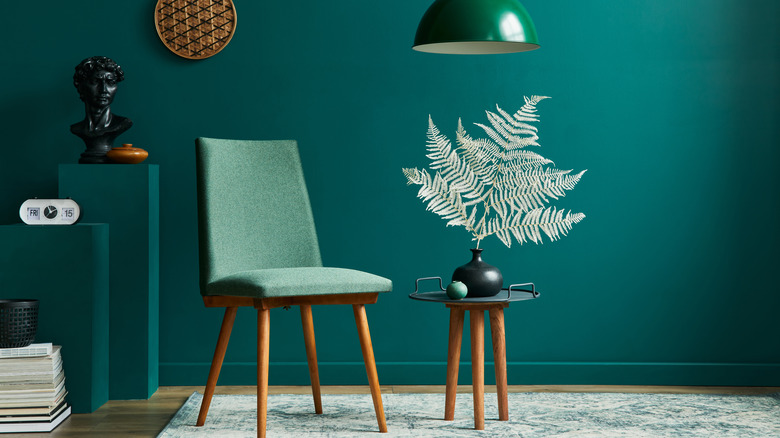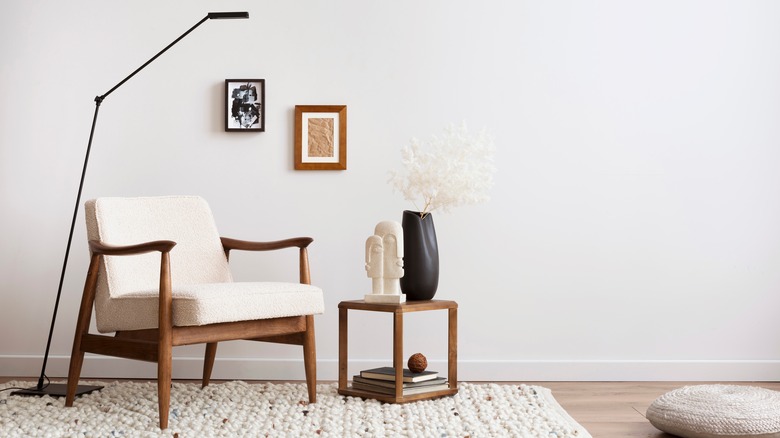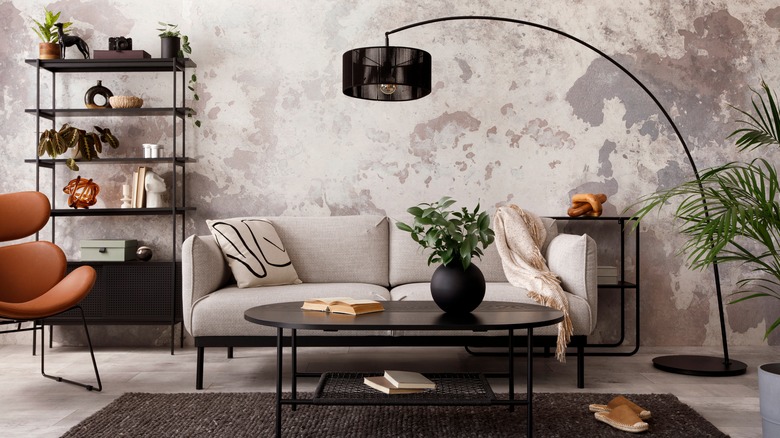Poorly Placed Lighting Is One Of The Biggest Mistakes You Can Make In A Small Living Room
There are plenty of design tricks and hacks to make a small living room seem larger. From where you place your furniture to the colors you use, you can transform how a compact space looks and feels. But one aspect many homeowners seem to overlook is lighting design, and that would be a mistake. Having the right lighting and fixtures is a key element for any room, and a small living room especially can benefit from proper placement.
This said, it isn't as simple as grabbing a lamp and placing it on a side table. You have to approach lighting strategically. That often means evaluating how you use your living room and identifying the activities that happen there. A living room that's a little more formal, used for conversation or reading, will be designed much differently than one that's the entertainment hub for the whole family. Further, with a small living room, you're working with a limited space, which means finding the right place for your lighting becomes that much more important.
The right fixtures and location
Lighting isn't only a functional aspect of design. Yes, it illuminates your home and provides light to complete tasks, but designers will stress how essential lighting is for a well-executed and balanced interior design. What fixtures you have and where you place them will make all the difference, especially in a small living room.
In a living room, you should have three layers of lighting: ambient (or general lighting), accent (which highlights details in a space), and task (which illuminates a specific area). Each of these types of lighting serves a different purpose, and their placement in a small living room will prove key to maximizing the space's potential. On the flip side, poorly placed lighting can end up throwing off your entire design scheme.
The three layers of lighting should work together. Ambient lighting, for example, should illuminate the entire room, and given the size of a small living room, a single overhead fixture placed in the front or center of the room should provide this. Think pendant lighting, ceiling fans, and chandeliers. For accent lighting, recessed lighting, sconces, and track lighting are good options. These can be placed in areas of a small living room where you want a bit of extra light, such as to spotlight artwork or photos.
Floor and table lamps, meanwhile, are great examples of task lighting, but where should they go? In a smaller space, you'll want to place these near seating areas like sofas and side chairs. They won't take up a lot of space but will provide the targeted lighting you need for tasks like reading or working on a computer.
Take note of natural light
Beyond lighting from your fixtures, natural light and the way it hits your room are important as well. Take a look at how sunlight comes through the windows, what it illuminates, and how it affects the colors in your design. All of this should influence the placement of your furniture and fixtures. The more natural light you have, the larger your room can feel, so it would be a mistake to block out any natural light sources in a small living room space.
When it comes to choosing a lampshade, you'll also want to keep the color in mind if your living room space is limited. Darker colors will block more light from the fixture, resulting in a moody, cozy, and smaller-feeling living room. Conversely, lighter lampshades will allow more light to shine through and brighten the entire room, which can make a room appear larger than it is.
Of course, you don't have to have the same color for every light fixture. While overhead lighting may benefit from a lighter color lampshade to better brighten the entire space, accent or task lighting could have darker shades to lean into the cozy effect.


